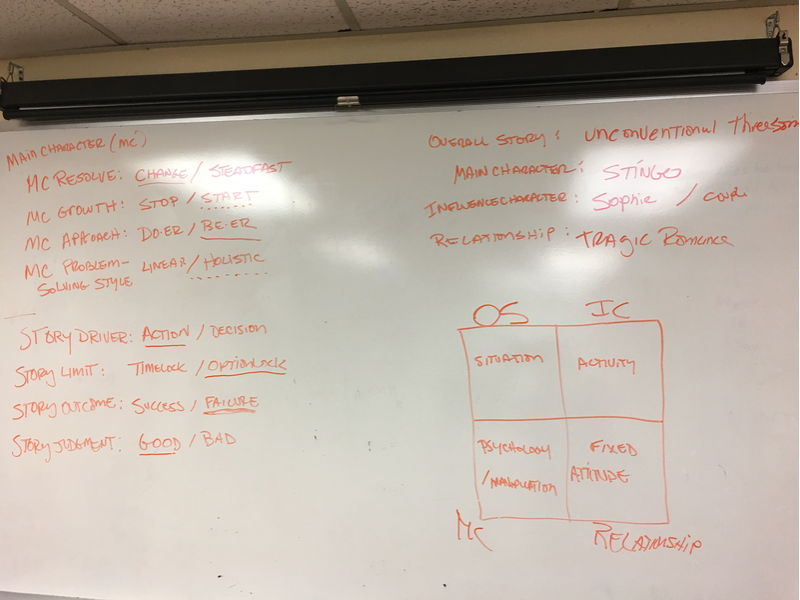Sophie's Choice Wrap-Up
A quick take on last night's analysis and why some of us might check out before the film is over.
Last night was our monthly Dramatica Users Group meeting where we gather together with theory co-creator Chris Huntley and analyze a film through the lens of Dramatica. This month was the super happy sing-along Sophie's Choice starring Meryl Streep, Peter MacNicol, and Kevin Kline.

Story analyst confession here right at the start: I couldn't finish the whole thing. I had seen the choice Sophie makes on YouTube awhile back and found it one of the most upsetting scenes I've ever seen. I thought maybe this was the reason why I turned it off 45 minutes in--that maybe I just didn't want to get to that place again. Plus, it was kind of boring, and I had yet to watch Game of Thrones this week. And because my best friend ruined the spoiler in The Empire Strikes Back for me when I was nine years old, I have this thing about seeing movies and shows when everyone else does.
Turns out there was something else going on.
The Main Character Throughline in Sophie's Choice is revealed through the character of Stingo (Peter MacNicol). One would assume that, because he is a man and because I am a man, and because I'm supposed to assume his position in the story that I would be able to relate to everything he says and does. But that wasn't the case.
The Dramatica theory of story identifies a story point known as the Main Character Problem-Solving Style. This point of reference sees the Main Character solving problems either through Male problem-solving or through Holistic problem-solving. Generally speaking, guys have a harder time relating to Holistic thinkers. They do great with Male thinkers because hey--who doesn't like someone who thinks like them? But Holism? It just doesn't make sense to linear thinkers that you would waste your time trying to balance out things when you could go right for the throat.
Which is why I checked out so early.
I mean, I love Moulin Rouge!, but combine that scene I knew that was coming up with a Main Character who thinks that just by inserting themself into a situation that somehow someway they will be swept up and pulled along...and I'm checking out to catch up with the Starks and the Lannisters.
Other key points we learned last night:
- The actual "story" of the choice Sophie makes in her old life is really part of another tale, rather than an essential element of the storyform we discovered. It informs and motivates some of the action, and certainly her Throughline. But you could cut it out altogether and still have the story presented make sense to an audience who didn't know any better.
- The
Objective Story ThroughlineofUniversecan be attributed to the unconventional threesome going on here and how one lives directly above the other. In addition all three principal characters suffer problems having to deal with thePast. Add to that "dress-up" nights and a Pink Palace Victorian house that seems to be trapped forever in yesteryear and you have all the makings of problems having to do with people stuck in an external state. - The
Objective Story ConsequencesofMemoriescomes into play because of theStory OutcomeofFailure. This can be seen in the evidence that their memories have destroyed them. To cope, Sophie drowns her memories in sensuality.
The entire class can be seen here: Sophie's Choice -- Dramatica Users Group on YouTube. A podcast will be available in the near future on the Sophie's Choice Dramatica analysis page.
Next month is the equally as happy Kramer vs. Kramer. Summertime fun!
Download the FREE e-book Never Trust a Hero
Don't miss out on the latest in narrative theory and storytelling with artificial intelligence. Subscribe to the Narrative First newsletter below and receive a link to download the 20-page e-book, Never Trust a Hero.

